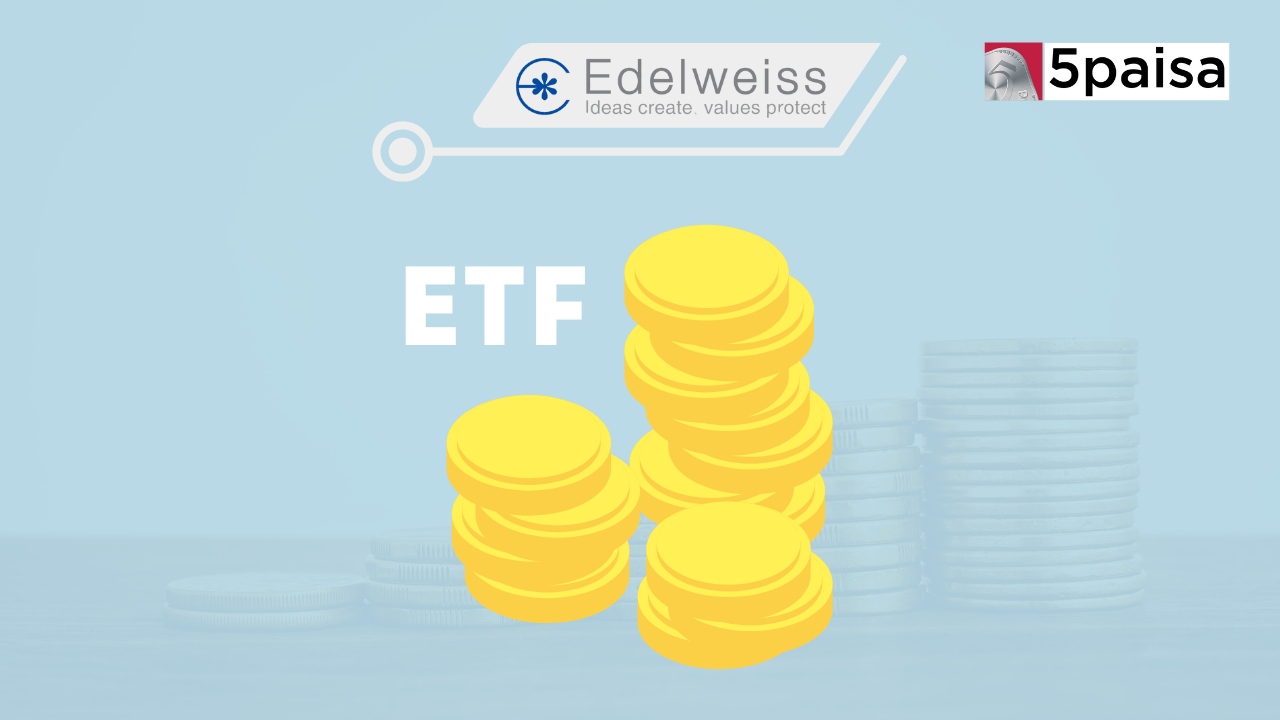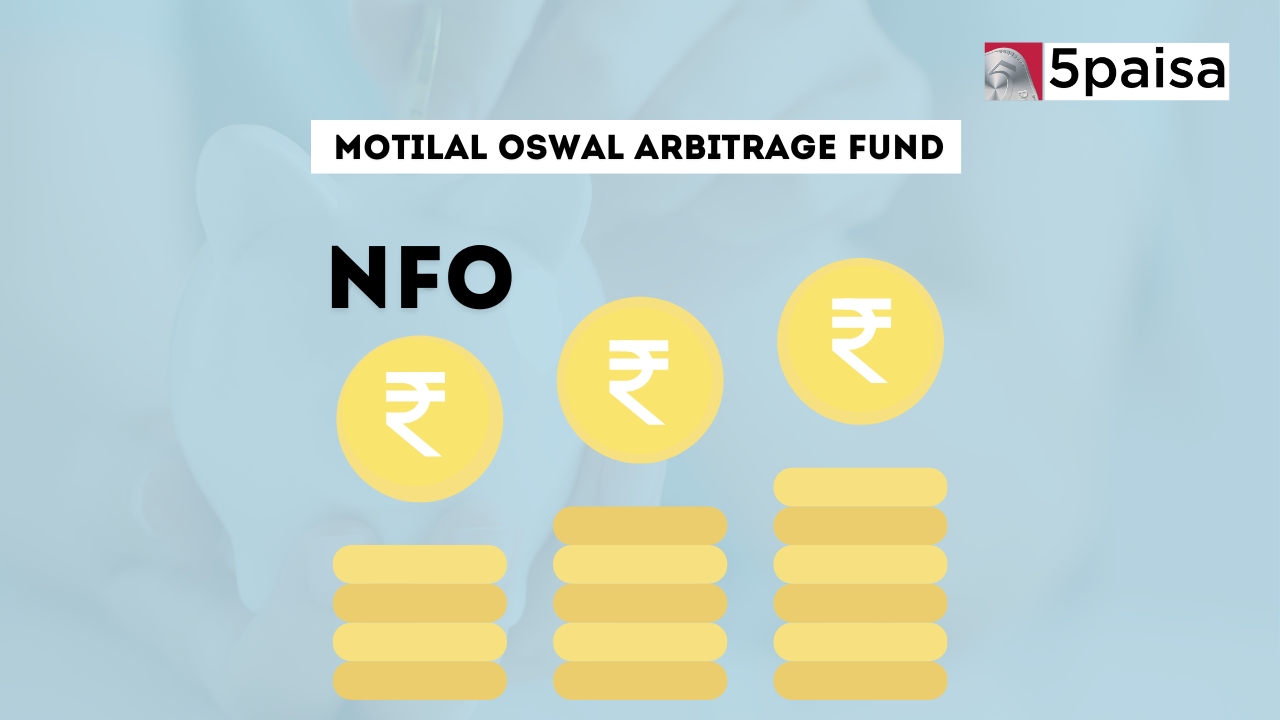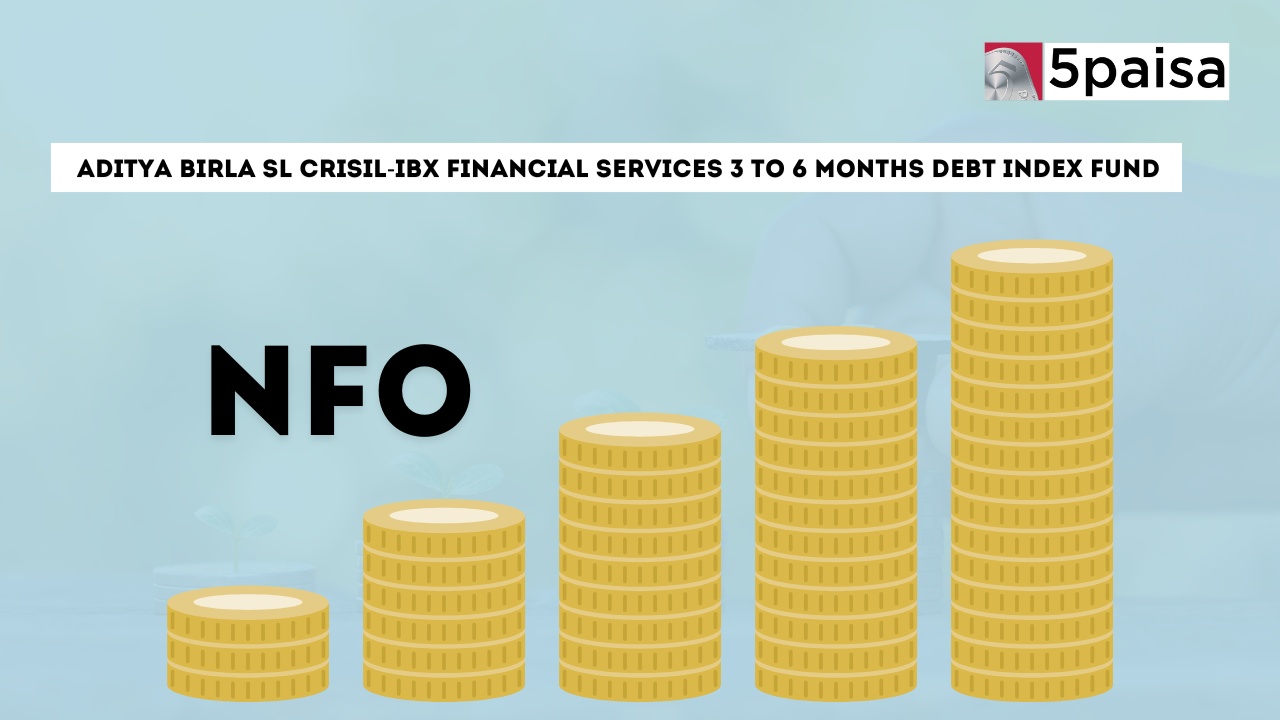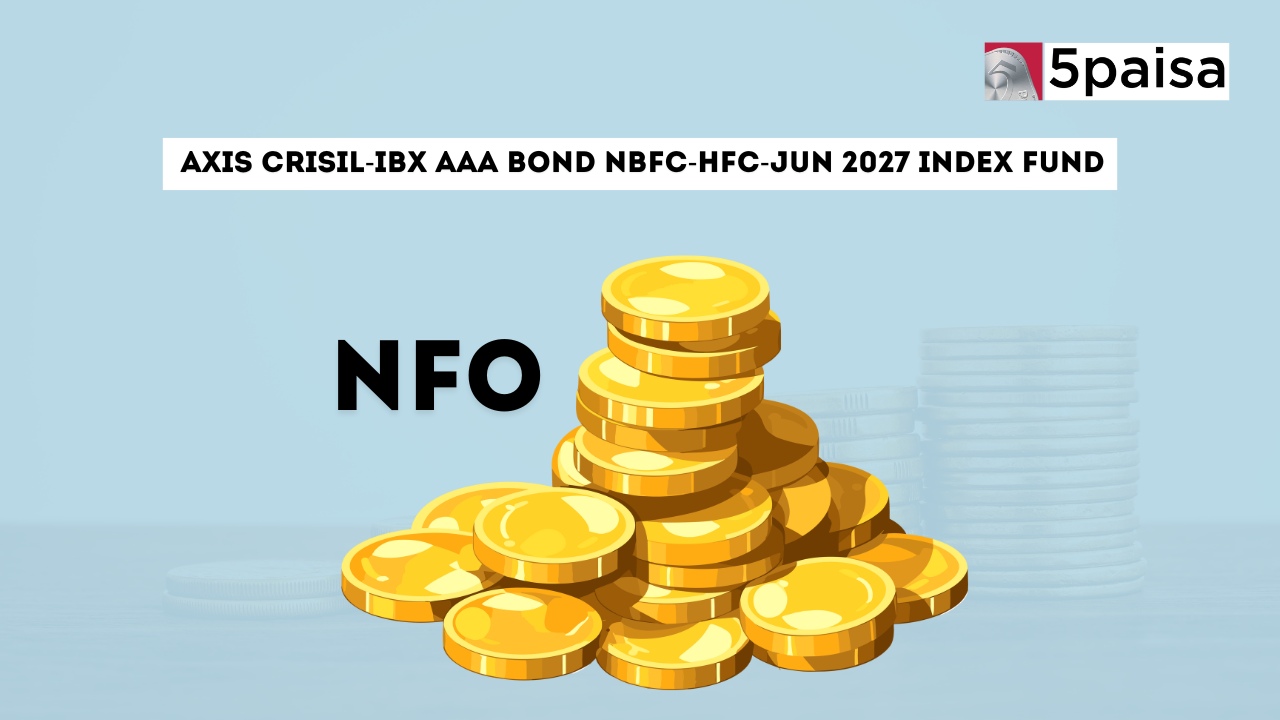Motilal Oswal Arbitrage Fund - Direct (G)
Edelweiss Nifty Bank ETF (G): NFO Details

Last Updated: 3rd September 2024 - 03:46 pm
The Edelweiss Nifty Bank ETF (G) is a prominent exchange-traded fund (ETF) that offers investors a focused exposure to the banking sector within India's dynamic stock market. This ETF aims to replicate the performance of the Nifty Bank Index, which comprises the most liquid and large capitalized banking stocks listed on the National Stock Exchange (NSE). As the banking sector is a crucial component of the Indian economy, the Edelweiss Nifty Bank ETF provides investors with a convenient and efficient way to gain targeted access to this vital industry.
With a growth-oriented approach (indicated by the "(G)" in its name), this ETF reinvests any dividends received from the underlying stocks back into the fund, allowing investors to benefit from the compounding effect over time. This makes the Edelweiss Nifty Bank ETF (G) an attractive option for those looking to capitalize on the long-term growth potential of India's leading banks.
The ETF is managed by Edelweiss Asset Management, a well-respected player in the Indian financial services space, known for its expertise in creating innovative investment products. By investing in the Edelweiss Nifty Bank ETF (G), investors can enjoy the dual advantages of diversification within the banking sector and the transparency, flexibility, and liquidity that ETFs provide.
Details of the NFO: Edelweiss Nifty Bank ETF (G)
Edelweiss Nifty Bank ETF (G) offers an excellent opportunity to tap into the robust growth of India's banking sector. With no entry or exit load, and a minimum investment amount of just ₹5,000, this open-ended fund is managed by experienced fund managers, Mr. Bhavesh Jain and Mr. Sahil Shah. Align your investment with the Nifty Bank TRI to benefit from the dynamic banking landscape in India.
| NFO Details | Description |
| Fund Name | Edelweiss Nifty Bank ETF (G) |
| Fund Type | Open Ended |
| Category | Other Scheme - Other ETFs |
| NFO Open Date | 03-September-2024 |
| NFO End Date | 6-September-2024 |
| Minimum Investment Amt | ₹5,000 |
| Entry Load | -Nil- |
| Exit Load | -Nil- |
| Fund Manager | Mr. Bhavesh Jain. Mr Sahil Shah |
| Benchmark | Nifty Bank TRI |
Investment Objective and Strategy
Objective:
The investment objective of the scheme is to provide returns before expenses that correspond to the total returns of the Nifty Bank Total Return Index, subject to tracking error. There is no assurance or guarantee that the investment objective of the Scheme will be achieved.
Investment Strategy:
The investment strategy of the Edelweiss Nifty Bank ETF (G) is designed to closely track the performance of the Nifty Bank Index, which represents a basket of the most significant and liquid banking stocks in India. Here’s a breakdown of the key components of its investment strategy:
1. Passive Management Approach: The Edelweiss Nifty Bank ETF (G) follows a passive investment strategy, aiming to replicate the Nifty Bank Index rather than attempting to outperform it. This is achieved by holding all the stocks in the index in the same proportion as they are weighted in the index.
2. Sector-Specific Exposure: The ETF provides concentrated exposure to the banking sector, which is a vital part of the Indian economy. By investing in this ETF, investors gain access to the growth and profitability of India’s leading banks, including both private and public sector players.
3. Full Replication Method: The fund typically employs a full replication method, where it invests in all the stocks that constitute the Nifty Bank Index in the exact proportions as the index. This method helps ensure that the ETF’s performance closely mirrors that of the index.
4. Reinvestment of Dividends: The ETF follows a growth option (denoted by "G"), where any dividends earned from the underlying stocks are reinvested into the fund rather than being distributed to investors. This strategy allows the investment to compound over time, potentially enhancing returns for investors.
5. Low-Cost Structure: As a passively managed ETF, the Edelweiss Nifty Bank ETF (G) typically has a lower expense ratio compared to actively managed funds. This cost-efficiency is attractive to investors seeking market exposure without the higher fees associated with active management.
6. Liquidity and Transparency: Being an ETF, it is traded on the stock exchange, providing liquidity and ease of access for investors. The holdings of the fund are transparent and are regularly disclosed, allowing investors to know exactly where their money is invested.
7. Market Timing Independence: The fund does not attempt to time the market or make speculative bets on the banking sector. Instead, it aims to provide long-term growth aligned with the performance of the banking sector as reflected by the Nifty Bank Index.
By adhering to this disciplined and transparent investment strategy, the Edelweiss Nifty Bank ETF (G) offers investors a straightforward and efficient way to participate in the potential growth of India’s banking sector.
Why Invest in Edelweiss Nifty Bank ETF (G)?
Investing in the Edelweiss Nifty Bank ETF (G) offers several compelling advantages for both individual and institutional investors. Here are some key reasons why one might consider investing in this ETF:
1. Focused Exposure to the Banking Sector
The Edelweiss Nifty Bank ETF (G) provides targeted exposure to the banking sector, which is a cornerstone of the Indian economy. The banking sector often benefits from economic growth, rising consumption, and increased financial inclusion, making it an attractive sector for investors looking to capitalize on these trends.
2. Diversification Within the Sector
By investing in the ETF, you gain access to a diversified portfolio of leading banks in India, both private and public. This diversification helps mitigate the risk associated with investing in individual stocks, as the performance is tied to the overall sector rather than any single bank.
3. Growth Potential
The ETF follows a growth-oriented strategy, where dividends are reinvested back into the fund. This allows investors to benefit from the compounding effect over time, potentially leading to higher returns in the long run, especially as the banking sector grows and evolves.
4. Low-Cost Investment
As a passively managed fund, the Edelweiss Nifty Bank ETF (G) generally has a lower expense ratio compared to actively managed funds. This cost efficiency makes it an attractive option for investors looking to minimize fees while still gaining sector-specific exposure.
5. Transparency and Liquidity
The ETF is traded on the stock exchange, providing investors with liquidity and the ability to buy or sell shares throughout the trading day at market prices. Additionally, the holdings of the ETF are transparent, with regular disclosures allowing investors to know exactly where their money is invested.
6. Aligned with Economic Growth
India’s banking sector is expected to grow in tandem with the country’s economic expansion. By investing in this ETF, investors can potentially benefit from the long-term growth trajectory of the banking sector, which is driven by factors like increasing credit demand, digital banking innovations, and regulatory support.
7. Ease of Access
ETFs, including the Edelweiss Nifty Bank ETF (G), offer ease of access and convenience for investors. You can easily purchase shares through your brokerage account, just like buying any other stock, without the need for extensive analysis or market timing.
8. No Market Timing Required
The ETF is designed to passively track the Nifty Bank Index, meaning investors do not need to actively time the market or make speculative decisions. This makes it an ideal choice for those looking for a hands-off investment approach with exposure to a specific sector.
9. Potential for Compounded Returns
With dividends reinvested back into the fund (as denoted by the "G" in the ETF's name), investors have the opportunity to enjoy compounded returns over time, enhancing the potential for wealth accumulation.
10. Professional Management
The ETF is managed by Edelweiss Asset Management, a respected name in the Indian financial services industry. This provides investors with the confidence that the fund is being managed by experienced professionals with a deep understanding of the market.
By investing in the Edelweiss Nifty Bank ETF (G), you can gain efficient, low-cost, and diversified exposure to one of the most critical sectors in India's economy, making it a strategic choice for long-term growth investors.
Strength and Risks - Edelweiss Nifty Bank ETF (G)
Strengths:
• Focused Exposure to the Banking Sector
• Diversification Within the Sector
• Growth Potential
• Low-Cost Investment
• Transparency and Liquidity
• Aligned with Economic Growth
• Ease of Access
• No Market Timing Required
• Potential for Compounded Returns
• Professional Management
Risks:
While the Edelweiss Nifty Bank ETF (G) offers various advantages, it's essential to be aware of the potential risks associated with investing in this ETF. Understanding these risks can help investors make informed decisions and manage their portfolios more effectively.
1. Sector Concentration Risk
The ETF is highly concentrated in the banking sector. This lack of diversification across other sectors increases vulnerability to sector-specific risks. Any adverse developments in the banking industry, such as regulatory changes, credit defaults, or economic downturns, could significantly impact the ETF's performance.
2. Market Risk
Like all equity investments, the Edelweiss Nifty Bank ETF (G) is subject to market risk. The value of the ETF's underlying securities can fluctuate due to market volatility, changes in interest rates, economic conditions, or investor sentiment. These fluctuations can lead to potential losses for investors.
3. Interest Rate Risk
The performance of banking stocks is closely linked to interest rates. Changes in interest rates, especially unexpected hikes by central banks, can affect the profitability of banks. Higher interest rates can lead to increased borrowing costs, reduced loan growth, and potential declines in the value of the banks' existing bond portfolios, negatively impacting the ETF.
4. Credit Risk
Banks are exposed to credit risk, which is the risk of borrowers defaulting on their loans. A significant increase in non-performing assets (NPAs) or defaults could adversely affect the financial health of banks, thereby impacting the performance of the ETF.
5. Regulatory Risk
The banking sector is heavily regulated, and changes in government policies, regulations, or compliance requirements can have a significant impact on banks. Stricter regulations or adverse policy changes could limit banks' profitability or growth potential, negatively affecting the ETF.
6. Economic Risk
The performance of the banking sector is closely tied to the overall economic environment. Economic downturns, recessions, or slowdowns can lead to reduced loan demand, higher default rates, and lower profitability for banks, which in turn could negatively impact the ETF's performance.
7. Liquidity Risk
While ETFs generally offer good liquidity, there can be times of low trading volume, particularly during market stress, which can lead to wider bid-ask spreads. This could result in higher transaction costs or difficulties in buying or selling shares at desired prices.
8. Tracking Error
Although the ETF aims to replicate the performance of the Nifty Bank Index, there can be a discrepancy between the ETF's returns and the index's returns, known as tracking error. This can occur due to factors such as management fees, transaction costs, or the timing of dividend reinvestments.
9. Dividends Not Guaranteed
The growth option (G) of the ETF reinvests dividends back into the fund, but the dividends themselves are not guaranteed. The amount of dividends can fluctuate based on the profitability of the underlying banks, which can affect the overall returns of the ETF
10. Geopolitical Risk
Geopolitical events, such as conflicts, changes in trade policies, or political instability, can impact the broader economy and, by extension, the banking sector. Such events can lead to market volatility and negatively affect the ETF’s performance.
11. Inflation Risk
While banks can sometimes benefit from inflation (through higher interest rates), high inflation can also erode the purchasing power of future cash flows, potentially leading to lower real returns on the ETF.
12. Currency Risk (for International Investors)
For investors outside of India, currency fluctuations between the Indian Rupee and their home currency can affect the value of their investment. A depreciating Rupee could reduce the returns when converted back to the investor’s home currency.
By understanding these risks, investors can better assess whether the Edelweiss Nifty Bank ETF (G) aligns with their investment objectives, risk tolerance, and overall portfolio strategy.
4o
- Flat ₹20 Brokerage
- Next-gen Trading
- Advance Charting
- Actionable Ideas
Trending on 5paisa
Mutual Funds Related Articles
Disclaimer: Investment in securities market are subject to market risks, read all the related documents carefully before investing. For detailed disclaimer please Click here.
 5paisa Research Team
5paisa Research Team




